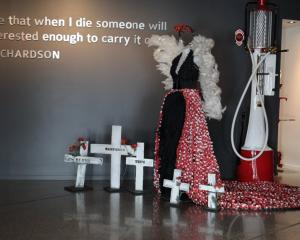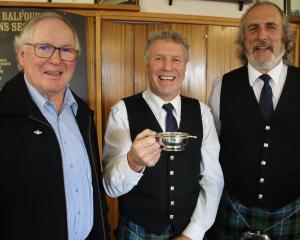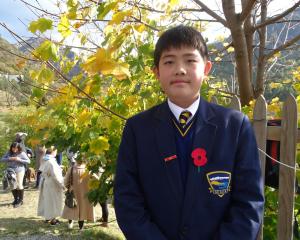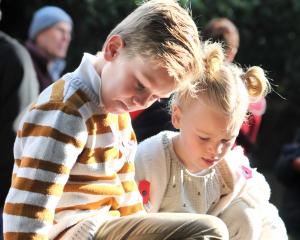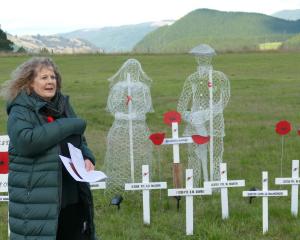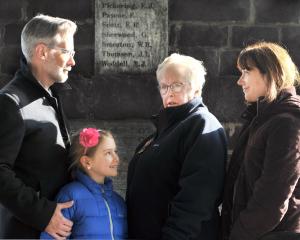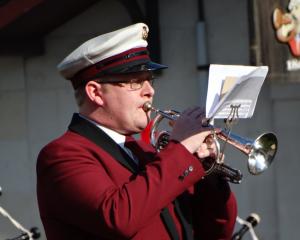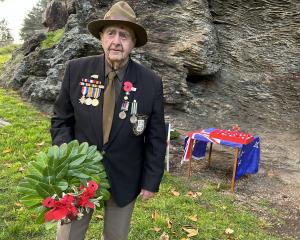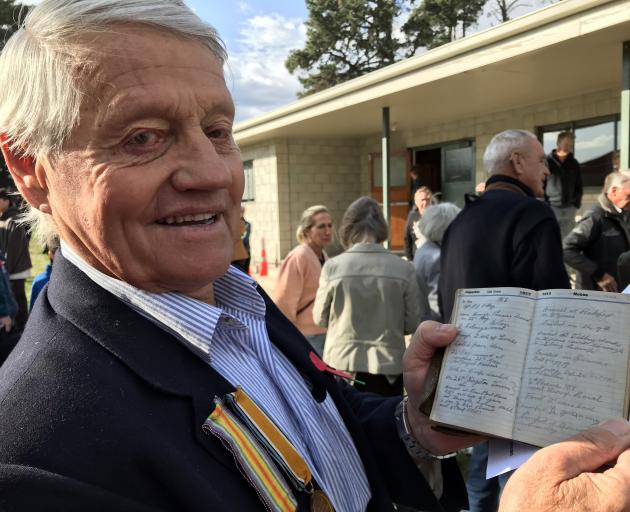

On November 6, 1918, the Central Otago rabbiter known in Tarras as "GB" Henderson camped at Le Quesnoy, on the western front of France.
His grandson, retired high country farmer Russell Emmerson, recalled his grandfather’s wartime service at the Tarras Anzac Day service yesterday.
"The significance of this entry is only appreciated by research about the date and place.
"It was a very strategic move by the New Zealand division to advance on the Western Front. GB was in a contingent that was to have NZ’s most successful day in the whole campaign.
"They advanced 10km, captured 2000 Germans, and 60 field guns. The day’s action cost the lives of 140 NZ soldiers.
"Seventh of November, they came back and attacked at Le Quesnoy ... for centuries it had occupied a strategic position ... It had been in German hands since 1914.
Mr Emmerson said the Third NZ Rifle Brigade executed one of the most spectacular feats of the war.
Led by a small group of men who scaled the city wall and exchanged gunfire, the New Zealanders entered and liberated the town.
The feat captured the imagination of the residents, Mr Emmerson said.
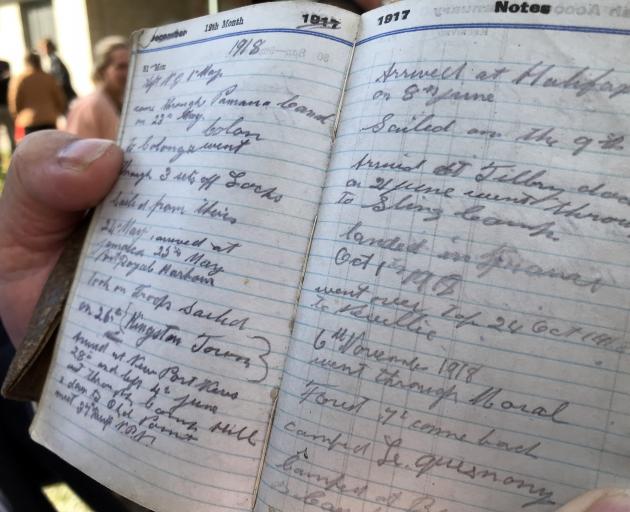
Mr Henderson briefly noted he arrived in New Zealand on August 19, 1919, and his discharge was on August 20.
The next entry was on September 23, when he wrote briefly about his new life.
"Wage book Cromwell, five pounds, 11 shillings and four pence."
There the entries ended.
But Mr Henderson returned to the land, got married, had two children and died in 1966, Mr Emmerson said.
Meanwhile Le Quesnoy now has a museum dedicated to the Kiwis who liberated the town.
"It will be a place to stand as New Zealanders ... a home in France. So if anyone is going to the World Cup this year, go visit Le Quesnoy," he said.
After his speech Mr Emmerson told the Otago Daily Times he had not visited Le Quesnoy yet.
"I wouldn’t mind, at some stage, but not this year," he said.


